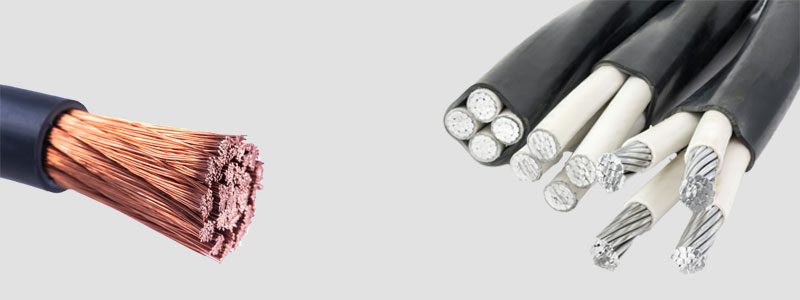March 16, 2023 by Lex Silbernagel, Special Projects – Utility

Copper and aluminum are the two most cost-effective, conductive metals used in capturing, storing and transporting electricity. Looking ahead, with the push for electrification of transport, low-carbon renewable energy and other factors, global supply-and-demand projections show that shortages for copper, aluminum and other minerals are expected. This will be especially prevalent in China, North America and Europe, where 90% of growth in demand is expected to occur.
Why the shortage?
The strong promotion and growth of green energy and transport is driving demand that will outpace supply. This supply shortage is caused by:
- Mining and production: Investment and development is not occurring at the rate needed to meet demand over the next 2–7 years.
- Rapidly increasing demand: The world has never increased production to what is being called for in such a short timeframe.
However, many elements are working against growth in demand — including global recession, inflation, impacts from the Russia-Ukraine war, turmoil in China, slowing of population growth and off-setting innovations — so global demand is likely to be softer than what is typically predicted. That being said, there will still be significantly increased demand and competition for more copper and aluminum.
Global supply factors
Low global inventory and the slow rate of development in mining and production will continue to result in supply shortages and volatility. In the United States, even with low-cost, clean energy, environmental and social challenges will impede permitting and limit growth in domestic mining and production.
China is the dominant producer for aluminum and copper, and it maintains that position through state-supported subsidies and a non-market economy approach to trade. This means that demand and supply changes in China result in large swings in global supply and prices. With China’s struggling economy, water shortages and energy and emissions constraints, it may be motivated to limit its rate of investment, resulting in a cutback in production and shortfalls in global supply. The dominance and influence of China, coupled with its non-market economy behavior and security tensions, creates risk and volatility that is highly disruptive to copper and aluminum producers in other counties, which deters investment and development.
What it means: Tariffs and antidumping/countervailing duty orders are needed to protect domestic mining and production.
The power of recycling
Recycling is going to play a major role in meeting future demand for copper and aluminum, making it critical to improve global recycling initiatives. Improving these initiatives could also help diminish the growing frustrations around single-use plastics and packaging.
As of today:
- Only half of all aluminum cans are currently recycled.
- 35% of global production comes from recycled aluminum, which is expected to increase to 44% by 2035.
- 32% of global production comes from recycled copper, which is expected to increase by 50% in the next 20 years.
- Use of aluminum for packaging is replacing plastics due to the separation challenges and contamination in single-stream recycling.
Key takeaways
The United States is on a path where it will need to import over 50% of its copper and aluminum needs. For this reason, copper should be added to the Critical Material List.
Trade — as we have known it the past 30 years — and the role of the WTO have changed significantly. Given the current conditions and changes in the supply chain, the United States will be dependent on global supply chains and trade relations with trusted countries that are committed to market-based trade and resilient supply. A coordinated strategy between industry, government and trusted countries is critical for stable and resilient supply. Understanding trade flows, potential bottlenecks/risks and setting targets at an industry and national level is also crucial for dependable supply.
While the above remains fluid, the bottom line is that the United States will be too slow in development of its own mining and production to supply what will be needed. Recycling and friendly/trusted trade relations and controls are key for reducing pressure and ensuring stable supply.
Read more:
- Why Planning is Key for Transformer and EV Charging Projects in 2023 and Beyond
- Aluminum: Three Interesting Trends to Watch
- Why Isn’t the Price of Wire Following the Price of Copper?
Disclaimer:
Our information is compiled from several sources that, to the best of our knowledge and belief, are accurate and correct. Border States accepts no liability or responsibility for the information published herein. These materials are provided for informational use only and do not, nor are they intended to, constitute legal advice.
The links contained in this article are provided for your convenience only. While we try to include only links to or frames of those sites which are in good taste and safe, we are not responsible for the content of third-party sites and cannot guarantee that sites will not change without our knowledge, and inclusion of such links and frames in this article does not imply Border States’ endorsement of the linked or framed sites or their content. If you decide to access any of the third-party websites linked to in this article, you do so entirely at your own risk and subject to the terms and conditions of use for such websites.